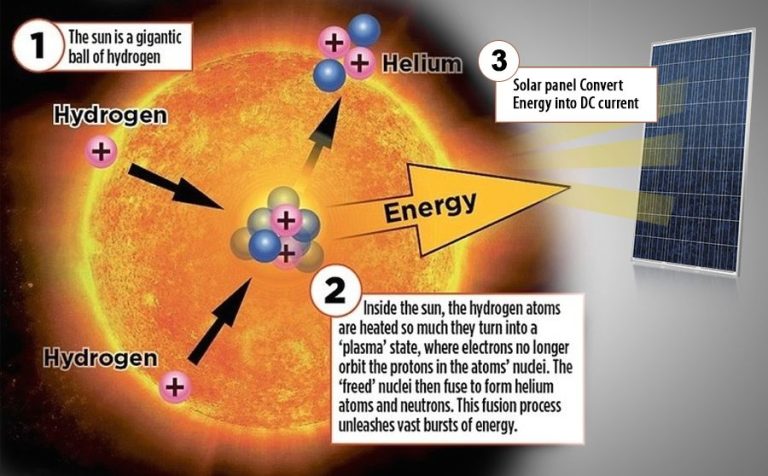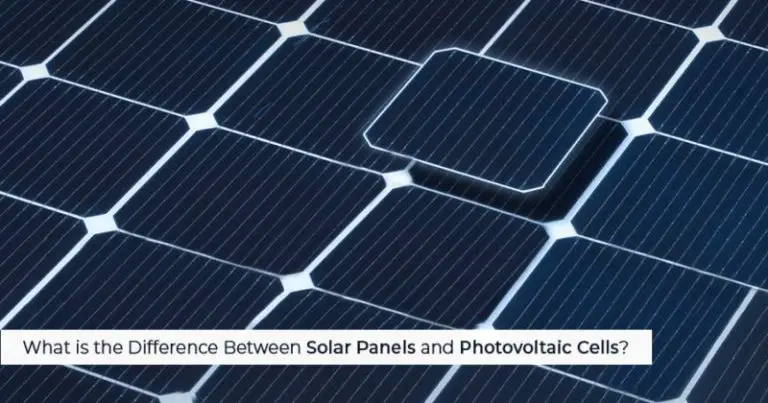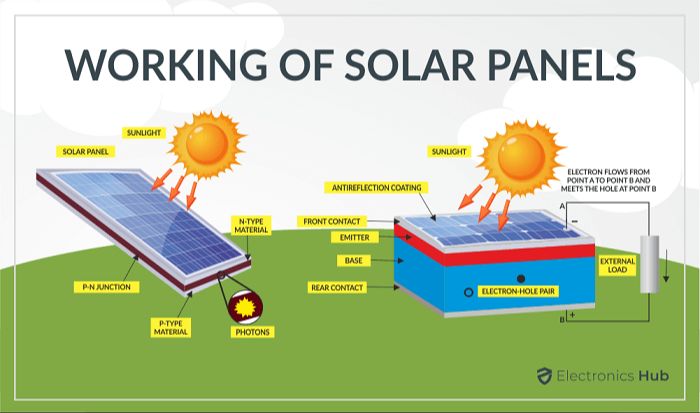Which Of The Objects Converts Light To Chemical Energy?
Photosynthesis is the process by which plants, algae, and some bacteria convert sunlight into chemical energy. During photosynthesis, organisms use the energy from sunlight to convert carbon dioxide and water into glucose (sugar) and oxygen. The glucose provides energy for the organism, while oxygen is released as a byproduct.
Photosynthesis is essential for almost all life on Earth. It provides the energy that producers (plants, algae, some bacteria) need to grow and reproduce. The oxygen released through photosynthesis enables aerobic respiration in other organisms like animals, fungi, and most bacteria. Without photosynthesis, ecosystems would lack the energy and oxygen necessary to sustain complex life.
In short, photosynthesis is the process that converts light energy from the sun into chemical energy stored in glucose and other organic molecules. This chemical energy drives the growth and reproduction of photosynthetic organisms, while also providing the energy needs of nearly all life on Earth.
Chloroplasts
Chloroplasts are organelles found in plant cells and some algae that are responsible for photosynthesis. They capture light energy from the sun and convert it into chemical energy in the form of carbohydrates. Chloroplasts have a double membrane envelope composed of inner and outer lipid bilayers. Inside the chloroplast are stacks of thylakoids which contain the chlorophyll pigments that absorb light. The thylakoid stacks, called grana, are connected by stroma thylakoids. The stroma is the fluid-filled space surrounding the thylakoid membranes where the light-independent reactions of photosynthesis occur.
When light strikes the chloroplast, it is absorbed by the chlorophyll and carotenoid pigments in the thylakoid membranes. This initiates the light-dependent reactions of photosynthesis where light energy gets converted into chemical energy carriers like ATP and NADPH. The chemical energy is then used in the stroma to fix carbon dioxide into carbohydrates through the Calvin cycle. Overall, chloroplasts play a critical role in photosynthesis by harnessing light energy and converting it into a form of chemical energy that plants can utilize. Their unique structure of thylakoids and stroma provide ideal compartments for the light and dark reactions of photosynthesis to take place.
Leaves
Leaves contain clusters of cells known as chloroplasts within their interior mesophyll cells. The mesophyll tissue makes up a large portion of the leaf’s interior and provides an optimal environment for photosynthesis to occur. The mesophyll cells contain an abundance of chloroplasts which increase the leaf’s exposure to light.
The mesophyll cells are located between the upper and lower epidermal layers of the leaf. This positions the chloroplasts to maximize light absorption from both surfaces of the leaf. The chloroplasts contain the pigments and proteins necessary to harvest light energy and convert it into chemical energy through photosynthesis. When light strikes the leaf, the chloroplasts in the spongy mesophyll cells are able to absorb the photons and begin the light-dependent reactions of photosynthesis.
Algae
Algae play a critical role in aquatic ecosystems and are capable of photosynthesis like land plants. Most algae contain chloroplasts – organelles within algal cells that capture light energy. The chloroplasts contain the green pigment chlorophyll, as well as other pigments like carotenoids, which absorb light energy during photosynthesis. Inside the chloroplasts, the light reactions of photosynthesis occur, converting light energy into chemical energy and producing oxygen as a byproduct. This oxygen is released into the surrounding environment. Like land plants, algae use carbon dioxide, water, and the energy from sunlight to produce carbohydrates and oxygen through photosynthesis. Over billions of years, the ancestors of algae helped enrich the atmosphere with oxygen. Today, algae continue to contribute significant amounts of oxygen into aquatic ecosystems and play foundational roles as primary producers in food webs.
Cyanobacteria
Cyanobacteria, also known as blue-green algae, are unicellular organisms that use chlorophyll and sunlight to produce their own food through photosynthesis. They are one of the few groups of bacteria that can perform oxygenic photosynthesis, which is the process that uses light energy to convert carbon dioxide and water into sugars and oxygen.
Cyanobacteria contain chlorophyll a, a green pigment that captures light energy. They also contain accessory pigments like phycocyanin and carotenoids that help absorb light energy and pass it on to the chlorophyll. When light hits the pigments, it excites electrons in them and provides energy to drive photosynthesis.
In the light reactions of photosynthesis, the cyanobacteria use light energy to extract electrons from water molecules. These energized electrons then move through an electron transport chain, which creates energy carriers like ATP and NADPH. In the light-independent reactions, ATP and NADPH provide the energy to fix carbon dioxide into sugar molecules.
By performing oxygenic photosynthesis, cyanobacteria played a crucial role in the development of Earth’s atmosphere. The oxygen they produced as a byproduct of photosynthesis slowly accumulated in the atmosphere, leading to the oxygen-rich atmosphere we have today. This oxygen also allowed for the evolution of aerobic organisms.
Cyanobacteria are abundant in both marine and terrestrial environments. In the oceans, cyanobacteria carry out a significant portion of global photosynthesis. On land, cyanobacteria live in soils and rock surfaces. Some species form symbiotic relationships with fungi to create lichens. Overall, the photosynthetic capabilities of cyanobacteria make them essential primary producers in many ecosystems.
Lichens
Lichens are composite organisms made up of a fungus combined with an alga. The algal cells contain chloroplasts and provide food for the fungus through photosynthesis. Here’s an explanation of how lichen photosynthesis works using the algal cells:
The algal cells contain chlorophyll and can perform photosynthesis. They use sunlight energy to convert carbon dioxide and water into glucose sugars. The algae provide these food sugars to the fungus, which cannot produce its own food. This mutually beneficial relationship allows lichens to grow in harsh environments where neither the algae nor fungus could survive alone. The fungus provides a structure and protection for the algal cells, while the algae provide food for the fungus through photosynthesis using chloroplasts.
So in lichens, it is the algal component that contains chloroplasts and performs photosynthesis. The chloroplasts in the algal cells convert light energy into chemical energy that the fungus can use. This allows lichens to produce their own food from sunlight, thanks to the photosynthetic abilities of the algal cells.
Corals
Some corals, like reef-building corals, have an interesting symbiotic relationship with algae that enables photosynthesis. Coral polyps provide a home and carbon dioxide for microscopic algae called zooxanthellae that live within their tissues. The algae then use photosynthesis to produce nutrients like glucose, glycerol, and amino acids which they share with their coral hosts. This provides corals with most of the energy and nutrients they need to survive.
This mutualistic relationship allows corals to thrive in nutrient-poor tropical waters by obtaining energy from sunlight via their algal symbionts. The algae get protection and compounds they need for photosynthesis from the coral. This allows the corals to deposit calcium carbonate and build large reef structures.
Unfortunately, climate change and ocean acidification can disrupt this relationship. When corals become stressed due to warming waters, they may expel their algal symbionts. This leads to coral bleaching, where the corals lose their main food source and colorful pigments, becoming white and vulnerable. Protecting corals from human impacts is crucial for maintaining these beautiful and biologically diverse underwater ecosystems.
Photosystems
Photosystems are clusters of chlorophyll and other pigments embedded in the thylakoid membranes of chloroplasts. There are two types of photosystems that work together to convert light energy into chemical energy during photosynthesis.
Photosystem I contains a chlorophyll molecule known as P700 that can absorb light at wavelengths of 700 nm. When P700 absorbs light energy, it becomes excited and releases an electron. This electron travels through an electron transport chain, generating ATP.
Photosystem II contains a chlorophyll molecule known as P680 that absorbs light at 680 nm. P680 also becomes excited when it absorbs light energy and releases an electron. This electron is captured by the electron carrier plastoquinone and used to replace the electron lost by P700 in Photosystem I.
The two photosystems work in tandem, with Photosystem II constantly supplying fresh electrons to replace those lost by Photosystem I during the light reactions. This flow of electrons from water to NADPH by the two photosystems is the first stage of photosynthesis that converts light energy into chemical energy.
Light Reactions
The light reactions are the first stage of photosynthesis, where light energy is converted into chemical energy in the form of ATP and NADPH. This takes place in the thylakoid membranes within chloroplasts. When a photon of light hits the chlorophyll in the thylakoid membranes, it excites an electron in the chlorophyll molecule. The excited electron is shuttled through an electron transport chain, which establishes a proton gradient across the thylakoid membrane. This proton gradient powers ATP synthase enzymes, which produce ATP. The electron transport chain also reduces NADP+ into NADPH. Therefore, the light reactions use light energy to produce the energy carriers ATP and NADPH, which will be used in the next stage of photosynthesis, the Calvin cycle.
Conclusion
Photosynthesis is the process by which light energy is converted into chemical energy. The key structure responsible for photosynthesis is the chloroplast. Chloroplasts are organelles found in plant cells and some protists such as algae, cyanobacteria, and lichens. Inside chloroplasts are discs of stacked thylakoids known as grana, which contain the pigment chlorophyll. When light strikes chlorophyll, it excites electrons which are then transported through an electron transport chain. This movement of electrons produces chemical energy in the form of ATP and NADPH. The whole process takes place during the light reactions of photosynthesis. Therefore, chloroplasts are the structures that convert light energy into the chemical energy needed to produce sugars and sustain life.
In summary, chloroplasts in plant cells, algae, cyanobacteria, and lichens perform photosynthesis to convert light energy to chemical energy.






